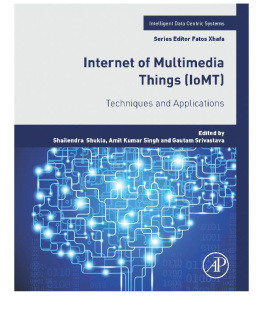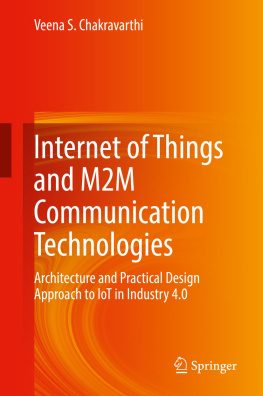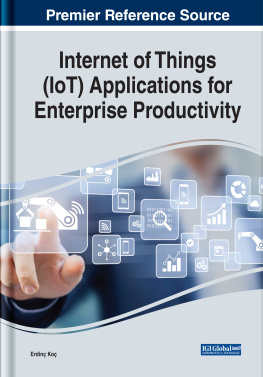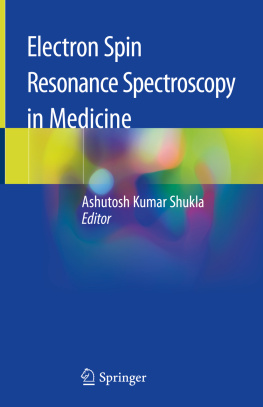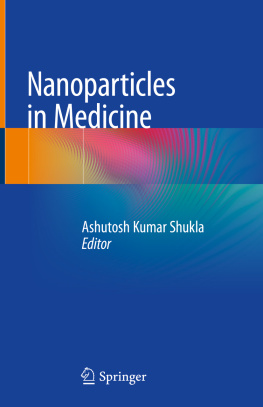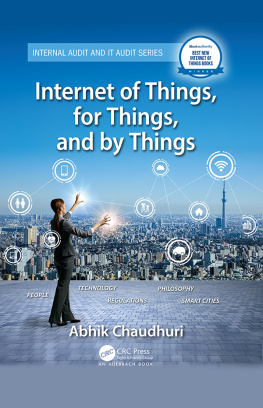Shailendra Shukla - Internet of Multimedia Things (IoMT): Techniques and Applications
Here you can read online Shailendra Shukla - Internet of Multimedia Things (IoMT): Techniques and Applications full text of the book (entire story) in english for free. Download pdf and epub, get meaning, cover and reviews about this ebook. year: 2022, publisher: Elsevier Ltd., genre: Romance novel. Description of the work, (preface) as well as reviews are available. Best literature library LitArk.com created for fans of good reading and offers a wide selection of genres:
Romance novel
Science fiction
Adventure
Detective
Science
History
Home and family
Prose
Art
Politics
Computer
Non-fiction
Religion
Business
Children
Humor
Choose a favorite category and find really read worthwhile books. Enjoy immersion in the world of imagination, feel the emotions of the characters or learn something new for yourself, make an fascinating discovery.
- Book:Internet of Multimedia Things (IoMT): Techniques and Applications
- Author:
- Publisher:Elsevier Ltd.
- Genre:
- Year:2022
- Rating:4 / 5
- Favourites:Add to favourites
- Your mark:
- 80
- 1
- 2
- 3
- 4
- 5
Internet of Multimedia Things (IoMT): Techniques and Applications: summary, description and annotation
We offer to read an annotation, description, summary or preface (depends on what the author of the book "Internet of Multimedia Things (IoMT): Techniques and Applications" wrote himself). If you haven't found the necessary information about the book — write in the comments, we will try to find it.
Internet of Multimedia Things (IoMT): Techniques and Applications — read online for free the complete book (whole text) full work
Below is the text of the book, divided by pages. System saving the place of the last page read, allows you to conveniently read the book "Internet of Multimedia Things (IoMT): Techniques and Applications" online for free, without having to search again every time where you left off. Put a bookmark, and you can go to the page where you finished reading at any time.
Font size:
Interval:
Bookmark:
Dinesh Singh; Ashish Kumar Maurya; Rupesh Kumar Dewang; Niharika Keshari Department of Computer Science & Engineering, Motilal Nehru National Institute of Technology Allahabad, Prayagraj, India
An interconnected network of multimedia devices is known as the Internet of Multimedia Things (IoMT). The characteristic of IoT to produce scalar sensor data differentiates this from IoMT. The IoMT consists of tiny multimedia devices that require less energy consumption and real-time data delivery. IoMT requires many multimedia devices connected through a stable network, efficient routing protocol, and lightweight computation to achieve the objective. The suitable design of the routing protocol improves the performance of IoMT in many folds. The Internet Engineering Task Force (IETF) user working group has standardized the IPv6 routing protocol for low power and lossy networks (RPL). The RPL is ubiquitous for resource-constrained devices and perfectly suitable for IoMT. In IoMT, the significant issues with the routing protocols are a large number of heterogeneous devices, high bit error rate, frequent link breaks, assurance of the quality of service, and emission of CO2. In addition to the suitable traditional routing protocol of IoT, many green routing protocols, fault-tolerant routing protocols, context-aware, and energy harvesting-aware routing protocols are specially designed for IoMT. The efficient design of routing protocol and improved quality of service (QoS) widens the application spectrum of IoMT in intelligent environments. This chapter presents a comprehensive review of traditional and most recent routing protocols and QoS in IoMT. The design of these protocols successfully satisfies the current and future requirements of the IoMT network in terms of handling a large volume of data, heterogeneous data types, and energy issues.
Internet of Multimedia Things; Routing protocols; Quality of service; IoMT; RPL; IoT; Multimedia applications; Survey
During the last decade, Internet of Things (IoT) has grown very fast and connected numerous devices worldwide. IoT can provide anytime, anyplace connectivity for anyone and anything .
The massive growth in multimedia on-demand traffics such as images, audios, and videos, has evolved the concept of Internet of Multimedia Things (IoMT) from IoT is defined by Microsoft as: Network QoS refers to the ability of the network to handle this traffic such that it meets the service needs of certain applications. The frequent packet loss and redundant packet delivery degrade the quality of constrained multimedia applications in IoMT network. The massive amount of data produced in IoMT network from many heterogeneous sources creates the processing overburden on the routing devices, resulting in packet loss.
| S. No. | IoT data | Multimedia data |
|---|---|---|
| 1 | Linear data | Gigantic data |
| 2 | Limited bandwidth | Adequate Bandwidth |
| 3 | Less memory storage | Massive memory storage |
| 4 | Limited processing | Excessive processing |
| 5 | Delay tolerant | Delay sensitive |
| 6 | Less power consumption | More power consumption |
The multimedia traffic is growing very fast which increases newer challenges for computing, sharing, storing, and transmitting the multimedia data. Computing data in IoMT needs novel methods for fog/edge and cloud computing devices. Similarly, for storing multimedia data, different compression/decompression methods are required in IoMT are some modified versions of RPL protocol for IoMT. In this chapter, we give a comprehensive review on routing protocols and quality of service in IoMT.
The remainder of the chapter is organized as follows: In section .
Wireless Sensor Network (WSN) performs a crucial role in assisting IoMT in diverse application spectrum. The energy constraint of nodes in WSN somehow restricts it to fulfill the expectations of IoMT applications. The efficient routing protocols save the energy of WSN nodes and thus, allow to carry off a massive amount of IoMT data. Recently, cluster-based routing has attracted due to less communication overhead and reduced routing energy consumption. The cluster members of a cluster can save their routing energy expense because of the routing assistance of the cluster head. But, since everything has its pros and cons, cluster-based protocol has its disadvantage.
In case of battery discharge or malfunctioning of the CH, all the cluster members would fail to transmit their collected data to the destination, which would defeat the smooth functioning of the IoMT application. Thus, the fault-tolerant approaches are in use in cooperation with cluster-based routing protocol for IoMT applications. Here, we illustrate the working principle of a fault-tolerant-based routing protocol used for IoMT.
The fault-tolerant routing protocol uses cluster-based scenario for the processing of IoMT application data. It uses the cluster join method for handling faulty cluster heads (CHs). Whenever a fault is detected in a CH, its cluster members are the first ones to catch it as they fail to receive an acknowledgment from their CH upon receiving transmitted data. So, they broadcast a help message to their neighboring CHs for re-selecting their CH. Out of all the respondents of the help message, the closest one is selected as the best backup CH. But, even this method has some leftover loopholes described as follows:
- If there are many faulty CHs, they will introduce a new problem of help message explosion.
- Each member of the faulty CH cluster may select a different CH as its backup for data routing, and then there would be a problem in handling that cluster's data.
The possible solutions to the above problems are:
- One of the solutions is the re-clustering of the entire network nodes. But, this is a laborious and costly process.
- Another solution is to keep a CH entirely for backing up the failed CHs by not initially assigning a cluster to it.
- The other solution includes identifying overlapping nodes (two nodes having similar coverage area) and putting one of such nodes into sleep mode, then wake it up only when the existing CH fails.
In view of these solutions to overcome the issues, a fault-tolerant routing protocol is illustrated in . The protocol performs the following operations:
- 1. The protocol initially detects the failure in CHs and record faulty and nonfaulty CHs.
- 2. It analyzes the energy levels of nonfaulty CHs and attempts to construct the virtual CH. The data is routed through this virtual CH to the destination node.
- 3. The maximum fault-tolerant capability of nonfaulty CHs is calculated to accommodate the members of faulty CHs.
- 4. The protocol uses a flow-bipartite graph (FBG) to estimate the energy cost of IoMT data routing. A flow-based pairs of faulty and fault-free CHs are formed to create an FBG.
- 5. Using the FBG, a flow transmission pattern is identified between the faulty and fault-free CHs. This indicates that which of the faulty CH is tolerated by which of the fault-free CHs.
The virtual CH and FBG construction methods used in this routing protocol are explained below:
Virtual CH
The steps involved for creating of a virtual CH and virtual super frame are:
Font size:
Interval:
Bookmark:
Similar books «Internet of Multimedia Things (IoMT): Techniques and Applications»
Look at similar books to Internet of Multimedia Things (IoMT): Techniques and Applications. We have selected literature similar in name and meaning in the hope of providing readers with more options to find new, interesting, not yet read works.
Discussion, reviews of the book Internet of Multimedia Things (IoMT): Techniques and Applications and just readers' own opinions. Leave your comments, write what you think about the work, its meaning or the main characters. Specify what exactly you liked and what you didn't like, and why you think so.

